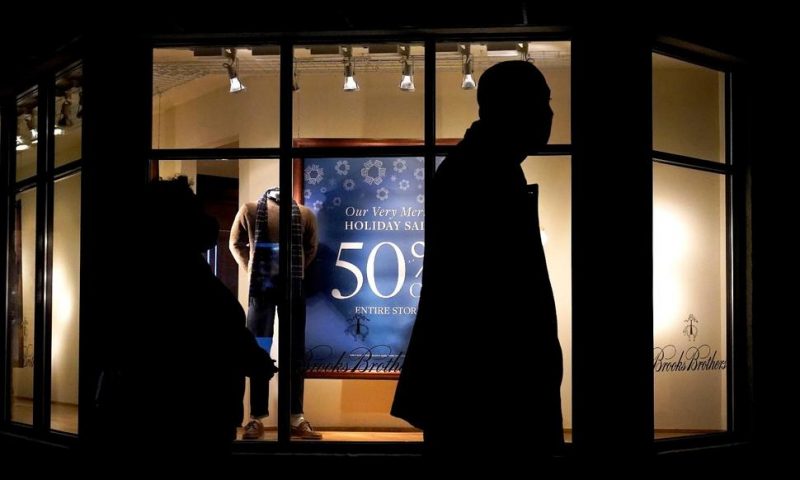A closely-watched gauge of U.S. consumer confidence tumbled in December as rising coronavirus cases dragged American optimism to its lowest level since the summer.
SILVER SPRING, Md. — A closely-watched gauge of U.S. consumer confidence tumbled in December as rising coronavirus cases dragged American optimism to its lowest level since the summer.
However, rising pessimism is now spreading during the crucial holiday season, which could make or break a number of retailers, airlines, restaurants other sector that have been hammered financially during the pandemic.
The December reading of 88.6 released Tuesday by the Conference Board is a sharp decline from last month, which was revised downward to 92.9, and it is far worse than economists had expected.
It may be an ominous sign for an economy in which consumer spending accounts for 70% of all economic economic activity.
The Commerce Department reported last week that U.S. retail sales fell a seasonally adjusted 1.1% in November, the biggest drop in seven months, and also worse than most were expecting. The drumbeat of weak economic data may be providing a grim preview of Christmas receipts, which can account for a quarter or more of a retailer’s annual sales.
The index measuring consumers’ assessment of current business and labor market conditions also fell sharply, from 105.9 last month to 90.3 in December. Consumers’ short-term outlook for income, business, and labor market conditions ticked up slightly from 84.3 in November to 87.5 this month, possibly because of recent approvals for COVID-19 vaccines.
It remains to be seen how Congress’ $900 billion relief bill, which was passed Monday and too late for the survey, will affect consumer behavior this winter.
The bill combines coronavirus-fighting funds with financial relief for individuals and businesses. It would establish a temporary $300 per week supplemental jobless benefit and a $600 direct stimulus payment to most Americans, along with a new round of subsidies for hard-hit businesses, restaurants and theaters and money for schools, health care providers and renters facing eviction.

